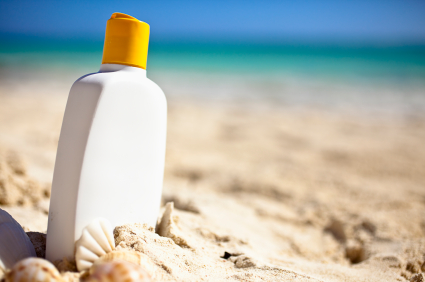Quick Facts about Skin Cancer
Considered the most prevalent form of cancer reported in the U.S., an excess of three million skin cancers are professionally diagnosed in over two million people every year.Annually, there are more reported instances of skin cancer than the incidences of lung, colon, prostate and breast cancers combined.
General Skin Cancer Facts
- Twenty percent of all Americans will develop some form of skin cancer at some point in their life.
- Basal cell carcinoma (BCC) is the most prevalent form of skin cancer with close to three million diagnoses annually.
- While BCCs are seldom deadly, they can be quite disfiguring if left unchecked.
- Second only to BCC, squamous cell carcinoma (SCC) has an incidence of 700,000 cases diagnosed every year.
- If an American lives to aged 65, they have 40% to 50% probability of developing BCC or SCC once in their lifetime.
- The most common precursor to skin cancer is known as Actinic Keratosis (AK).
- Affecting at least fifty-eight million Americans, about 65% of squamous cell carcinomas and 36% of basal cell carcinomas are lesions that were diagnosed as actinic keratoses previously.
- Approximately 90% of non-melanoma tumors are the result of exposure to ultraviolet radiation from the sun.Fifty percent of adults report they have had at least one sunburn within the previous year.
Facts about Melanoma
- One American dies of melanoma hourly.
- Compared to seven other prevalent cancers, melanoma is the only one where rates are increasing. Annual instances increased almost two percent yearly from 2000 to 2009.
- Approximately 86% of melanomas are related to overexposure to the sun’s ultraviolet rays.
- In young adults (25 to 29 years), melanoma is the most prevalent type. It is the number two form of cancer in 15 to 25 year olds.
- If melanoma is detected and treated early, the US survival rate is about 98% dropping to 62% when melanoma advances to the lymph nodes. Only 15% of cases survive when it spreads to far-off organs.
- Risk for melanoma increases by 100% if an individual suffers at least five sunburns in their lifetime.
- At least one serious sunburn, in childhood or adolescence, doubles the possibility of getting melanoma later in life.
- Melanoma treatments cost approximately two and one half million dollars in healthcare costs annually. Forty percent of these costs are for advanced cases.
- Stage IV melanoma cases only make up 4% of all U.S. melanomas.
Cancer Facts in Men and Women
- Estimates show 3,200 American females and 6,280 males will succumb to melanoma this year.
- Melanoma ranks fifth for male cancers and seventh for female cancer cases.
- Women under 39 years old have a greater chance of getting melanoma than other cancers, excepting breast cancer.
- Most people diagnosed with melanoma are white males over 50 years old.
- People over the age of 40, particularly males, have the highest unprotected exposures to UV radiation every year.
- Greater than 90% of skin changes, attributed to normal aging, are from sun exposure.
Cancer Facts in Children
- 90% of childhood melanomas are in patients between 10 and 19 years old.
- Almost 7% of childhood melanomas are found in non-Caucasians, a higher percentage than among non-Caucasian adults.
- Melanoma makes up 3% of all types of pediatric cancers.
- Diagnosis and treatment is put off in approximately 40% of pediatric melanoma cases.
Ethnic Cancer Facts
- Approximately 2% to 4% of cancers in Asians are attributed to skin cancer.
- Around 1% to 2% of cancers in African-Americans , Asians, and Indians are this disease.
- BCCs are the most common types in Hispanics, Asians, and Caucasians.
- Among African-Americans and Asian Indians, SCCS are the most common skin cancers.
- SCCs in African Americans tend to be more aggressive, associated with a 20 to 40 percent risk of metastasis.
- Melanoma is uncommon amongst African Americans, Asians and Latinos. It is often deadly in these ethnic groups.
Cancer Facts Regarding Tanning
- In individuals 18 to 29 years old, diagnosed with melanoma and utilizing tanning beds, 76% of cases were attributed to this practice.
- Anyone tanning indoors four times yearly raises their chances of BCC and SCC by 15%.
- A single tanning bed visit by high school/college students yearly boosts their risk for BCC by 10%, increasing to 73% with six visits.
- Females make up 71% of tanning salon clientele.
Melanoma treatments cost approximately two and one half million dollars in healthcare costs annually. Forty percent of these costs are for advanced cases. However, stage IV melanoma cases only make up 4% of all U.S. melanomas.

